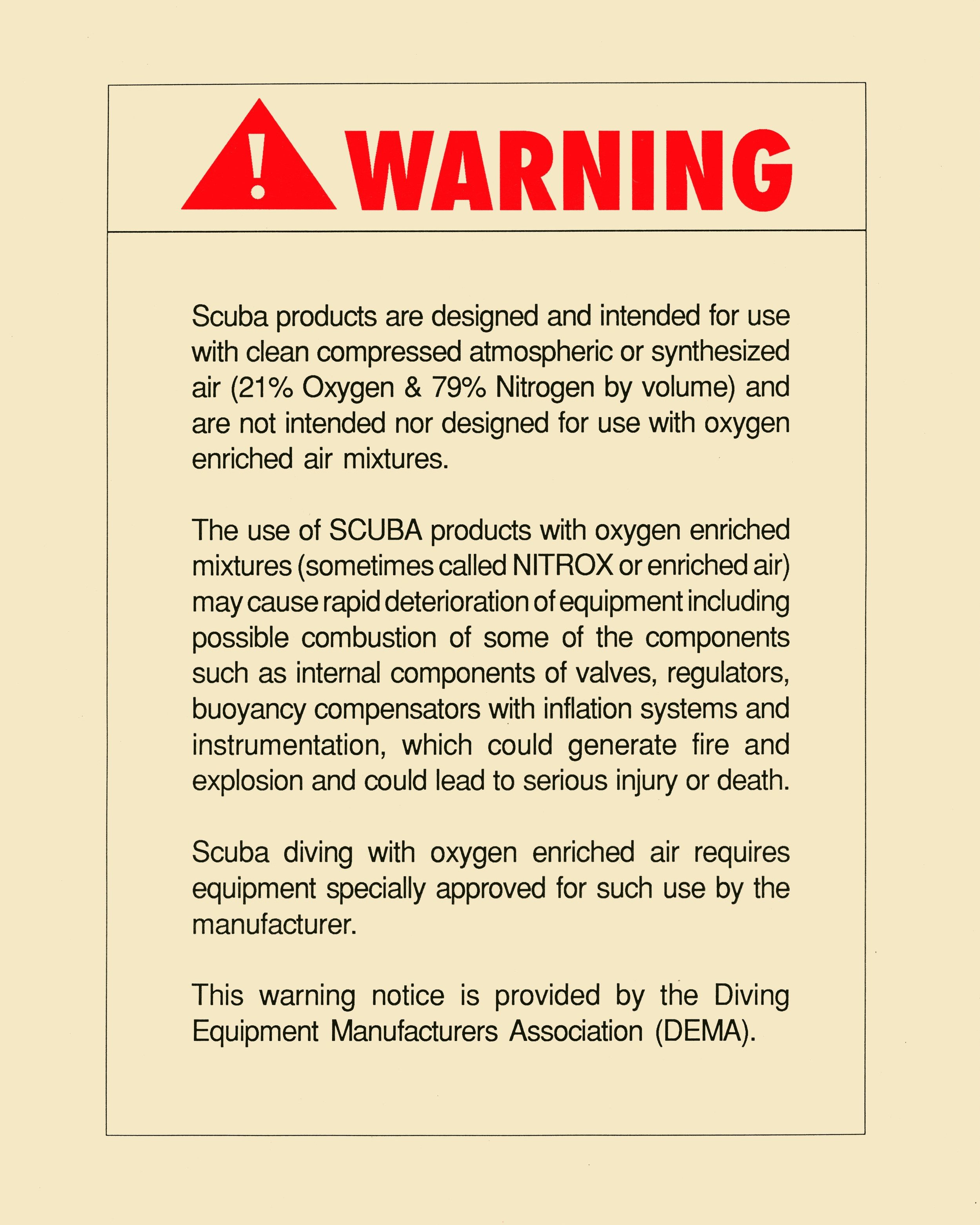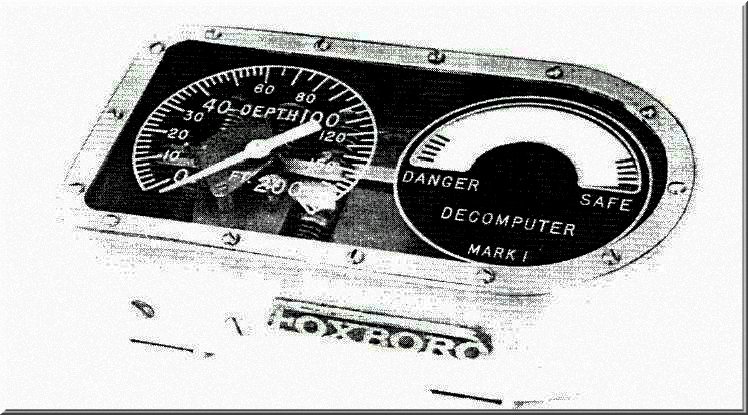Cowboys, Voo Doo Gas and Mount Everest
/Awhile back I was asked to speak about about the trials and tribulations that technical divers had endured back when deep and mixed gas diving was considered a foolish and irresponsible act. Many years ago in a column I wrote for Diver Magazine, I pointed out that many agencies in the recreational dive training industry have withdrawn from incorporating risk analysis and acceptance into their programs. What was not printed in that article was the following opinion I wanted to make regarding the dive training industry;
This is a reprint from Diver Magazine published in 1998. It was Part Two in a series that focused on 'Looking Back'. Despite how long mixed gases and specifically 'normoxic trimix' has been around, many divers still do not take advantage of the benefits. Ironically this message is still very relevant today.
Above: DEMA boss Robert Gray wrote Dick Rutkowski, founder of the first dedicated nitrox training agency; “…due to the lack of informational systems and dedicated equipment, the use of nitrox with existing recreational dive equipment may create confusion among many divers and may present a serious, unwarranted safety risk”. Dick and his organization, IAND (now IANTD) was prohibited from exhibiting at the DEMA show in 1992. A warning label put out by DEMA warning divers that using nitrox “may cause the rapid deterioration of equipment including possible combustion…”.
Voo Doo Gas indeed.
Less than a decade ago these same institutions set an embargo against any individual or company attempting to promote Nitrox or technical diving. In fact IANTD (then IAND) was originally prohibited from participating in any significant North American Dive Show because it was feared we (I was part of that advocacy group) were offering some snake oil that was not good for divers. It was interesting how they had allowed themselves to make these decisions for divers inferring that recreational diving was strictly this and very safe and technical diving was specifically that and very risky. During a discussion regarding insurance coverage, the head of another recreational training agency once referred to technical diving as 'that dangerous shit'. By implementing maximum depth limits, specific dive equipment and restrictive diver training practices the recreational agencies had determined for their students how much risk was acceptable without saying why. And then in a one fowl hypocritical swoop they adopted the very same principals and tools that began so long ago and have always been the fundamental practices for 'technical divers' (for example; Nitrox).
In the past many training agencies and their advocates did not teach divers the realities of technical diving because they knew nothing about it nor did those realities fit in with their strategical plan or their financial agenda.
Advanced sport diving does require a great deal more training, experience and thought, but it can be just as safe as regular recreational diving activity. Unfortunately the hypocrisy of it all has done its damage and the bandwagon ride has encouraged too many 'armchair tekkies' to go where they have no right to be with arrogant and over confident attitudes. The result will be a higher-fatalities report giving the technical industry an undeserved rap of unnecessary high risk.
Passions are the winds which fill the sails of the vessel; sometimes they sink it; but without them it would be impossible to make way… Everything is dangerous here below, but everything is necessary. ~ Voltaire 1747
Let’s put things into perspective; I have been referred to as a cowboy breathing voodoo gas because I chose to dive Rebrathers, twins or quads (scuba tanks) with Trimix and Nitrox on deep wrecks and in caves. Yet when I do these dives I incorporate extensive dive planning practices, equipment preparation, mental, emotional and physical fitness exercises and draw upon years of training and experience. For me those dives were no more risky than an eighty-foot dive on a wall with a single tank, and what risk that did exist I was clearly aware of. I once heard a statistic that listed scuba diving and bowling somewhere along the same line in the 'risk ' category. Of course that is bullshit. As safe as diving might be there have been far more diving fatalities than bowling.
Truth, where does it lie? It is out there but in many different forms. Let's compare a table of no-stop limits from some of the more reputable organizations in the diving industry. From the table below we can see how very diverse the interpretations of safe diving practices can be. But even at an extreme end of conservatism the table indicates a possible risk as great as 1% or a possible 1 in every 100 are likely to have a problem by spending only 8 minutes at 100 feet.
So which table, dive computer or decompression algorithm do we than use? This should be up to the student by giving them everything they need to know about decompression and how the tables actually calculate residual nitrogen. The dive tables are an excellent example of how different diving activities can be perceived as both risky and safe. In an Open Water Program the students are taught how to use their table and told that exceeding their limits is strictly forbidden however, we do not explain how the tables actually work and what will actually happen when one exceeds the limits and gets bent. The 'B' word - as recreational instructors we are prohibited to expound upon it and are encouraged to use phrases such as 'in the unlikely event you should…'. By maintaining such a covert attitude we do not honestly provide our students with the true risks of diving nor do we teach them anything about risk analysis or acceptance. We also sentence those who follow human ambition to explore and challenge the limits of human capability as guilty of acting like cowboys. Karl Huggins, in his first edition of 'Dynamics of Decompression Workbook' wrote about truth;
"Some training agencies dictate which decompression tables should be used by exposing their students to only one of the available tables. If any of the other options are discussed, it is generally in a disparaging light. All this does is lure newly trained divers in to the false sense of security that the technique they are taught is 'truth'. They are not exposed to other theories, models, tables and debates which exist in the decompression field that are needed to make educated and knowledgeable decisions regarding their own decompression."
~ Karl Huggins
The truth that Huggins writes about can be applied not just to dive tables, but to training objectives, philosophies and curriculum. We create a false sense of security with phrases such as "…as long as a diver follows all the rules, he or she will never have a problem." Divers need to know that regardless of what kind of diving they are doing, there will always be some risk - exactly how much can be roughly calculated by considering all of the factors involved.
As long as you follow all the rules you will never get hurt - true or false? As a 'technical diver' I enjoy diving deep and in places beyond the recreational or even sport diving limit. Yet some authorities in diver training are reluctant and in many cases adamantly opposed to deep diving. At this time there are no laws regulating how deep a diver can go. Adventurers who climb mountains to reach record summits; skiers that challenge slopes that have never been skied before; Formula One race car drivers who assemble teams to break world speed records; these individuals all maintain the same rights as a diver wishing to dive deep. Yet unlike deep divers, these people are hailed as accomplishing great feats of endeavour.
Today people without any mountain climbing experience or preparation pay small fortunes to climb Mt Everest. The majority of them are guided by experienced, well-equipped guides to safely reach the summit. Those who wish to make it a record breaking event challenge the summit without oxygen, with out safety lines or on trickier faces of the mountain only because the summit of Mt Everest has been reached by hundreds of people and no longer considered a unique and honourable event. These people increase the risk to increase the glory. Today hundreds of divers visit the Andrea Doria, a wreck once thought of as purely exploration. Deep divers will not, however increase the risk to make a dive on the Doria more glorified, in fact they will take advantage of any extra safety measures available.
Unnecessary risk taking and deep diving activity by those who are not properly trained is unacceptable. Yet advanced diving principals such as risk assessment and diving realities should be a part of every diver program. By 1998 nearly every dive travel and manufacturer booth at the DEMA show had some connection with the advanced sport diving industry. High tech diving had arrived and finally as much part of the diving industry as any other. With it came a challenge to accept and incorporate the infrastructure that provided divers with knowledge to make every dive safely. The attitudes towards technical diving and advanced diving technology still seem to scrutinize the value or merit of this technology. In fact there seems to be a reluctance by many divers to use nitrox.
On so many levels nitrox is a more appropriate, efficient and safe gas to breathe. It may be the failure of the dive industry in North America to continue to develop gas blending systems that produce affordable fills or it may be the reluctance on behalf of divers to pay an extra couple of bucks for a fill. The technology however, is here and the science has proven time and again that nitrox and advanced diving systems are paving the way for more responsible diving. Accept it pardner.
~ Safe Diving






